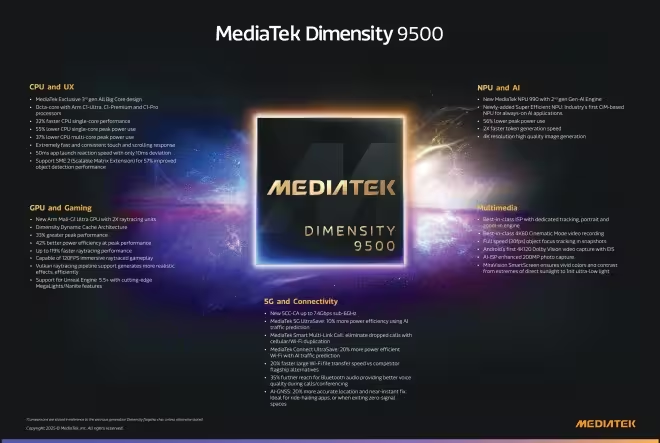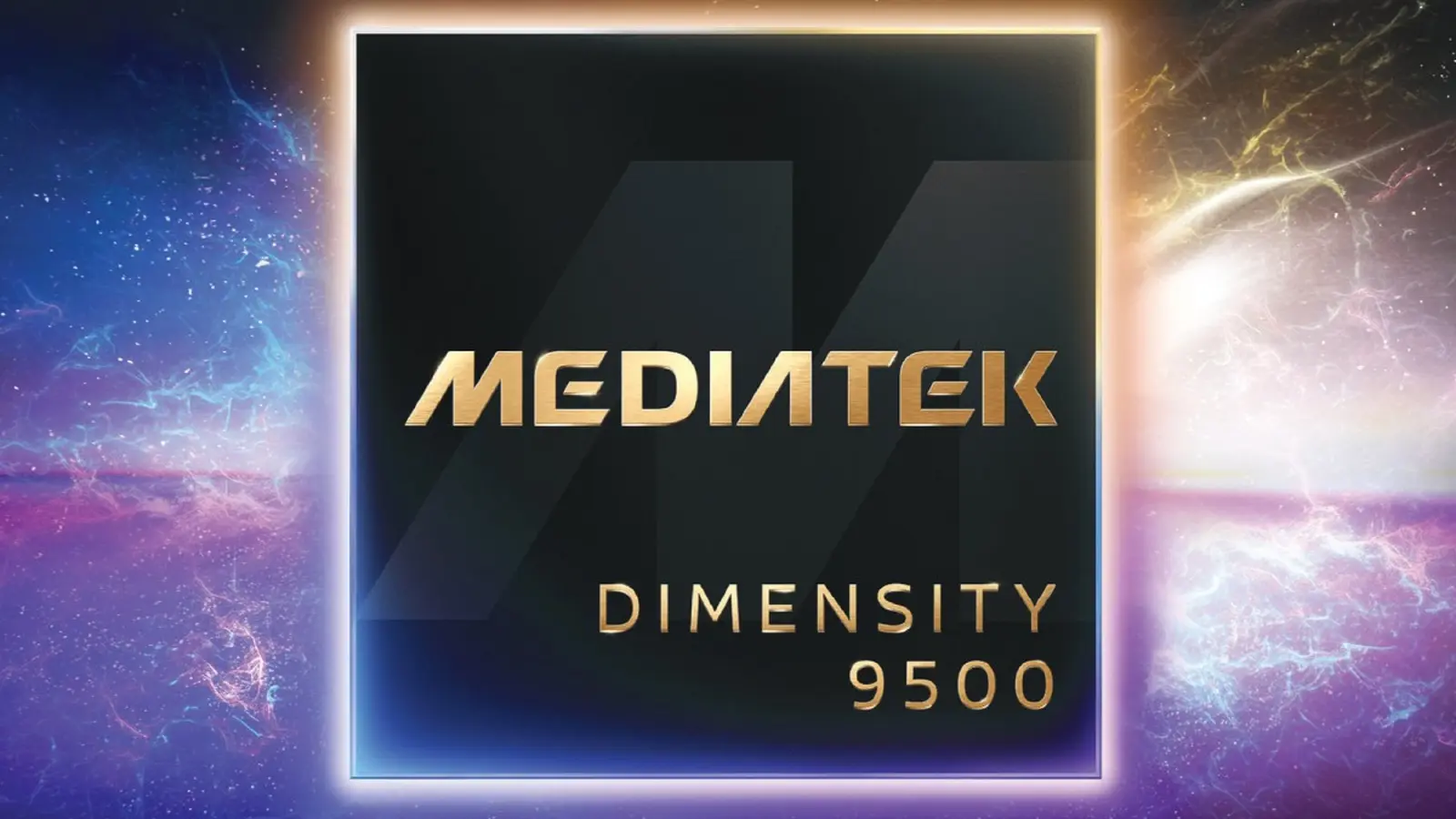4 Minutes
MediaTek has unveiled its latest flagship chipset, the Dimensity 9500, positioning the SoC as a major step forward for on-device AI, mobile gaming, and power efficiency. The company says the 9500 raises the bar across CPU performance, graphics, neural processing, storage throughput, and connectivity optimizations.
CPU and architecture The Dimensity 9500 adopts an "All Big Core" Arm configuration built on the newest generation of Arm CPU designs. The octa-core layout pairs a single Arm C1-Ultra core clocked at 4.21 GHz with three C1-Premium cores and four C1-Pro cores. MediaTek reports up to 32% better single-core performance and 17% higher multi-core scores versus the Dimensity 9400, while the Ultra core can deliver peak performance with up to 55% lower power draw. The 9500 also claims roughly 30% improved efficiency during multitasking and adds Armv9.3 support with SME2 instructions to boost AI perception and ML throughput.
Storage and I/O The chipset brings a new 4-channel UFS 4.1 storage interface, which MediaTek says doubles sequential data speeds to accelerate app loads, game streaming, and large-file handling.
GPU and ray tracing Graphics are handled by Arm's new G1-Ultra GPU. MediaTek advertises up to 33% higher peak GPU performance and a 42% improvement in power efficiency compared with previous designs. The GPU doubles ray-tracing units, promising as much as 112% faster ray-traced rendering and support for up to 120 fps ray-traced gaming with interpolation. Developers will benefit from Vulkan ray-tracing support and compatibility with Unreal Engine 5 features such as MegaLights and Nanite.

NPU and generative AI At the heart of the 9500's AI capabilities is MediaTek's ninth-generation NPU 990 with Generative AI Engine 2.0. MediaTek says the new NPU delivers roughly twice the compute of its predecessor and introduces BitNet 1.58-bit large-model processing to slash power consumption by up to 33%. With doubled integer and floating-point compute capability, the 9500 can accelerate tasks like 3-billion-parameter LLM output (claimed 100% faster), process up to 128K token sequences, and enable 4K image generation — all while reducing peak power use by up to 56%. The Super Efficient NPU uses an integrated compute-in-memory architecture designed to lower power and allow more continuous on-device AI workloads.
Imaging and display The integrated Imagiq 1190 ISP supports RAW-domain pre-processing for up to 200MP captures with 30 fps continuous focus tracking and introduces an advanced portrait engine capable of 4K 60 fps portrait video. The chip also supports MediaTek's latest MiraVision Adaptive Display enhancements for improved color and power-aware display handling.
Connectivity and network intelligence In wireless performance, MediaTek claims the Dimensity 9500 reduces 5G power consumption by about 10% and Wi‑Fi power by roughly 20%. A 5CC carrier aggregation mode can increase bandwidth by approximately 15%. New AI-driven positioning and network-selection features boost location accuracy by an estimated 20% and can cut network latency by up to 50% through congestion prediction and smarter handover decisions.
Market outlook The Dimensity 9500 is expected to directly compete with Qualcomm's Snapdragon 8 Elite Gen 5 in the flagship tier. Manufacturers such as Oppo and Vivo are already lined up: the chipset is anticipated to appear in devices like the Oppo Find X9 Pro and the Vivo X300 later this year.
Source: gsmarena


Leave a Comment